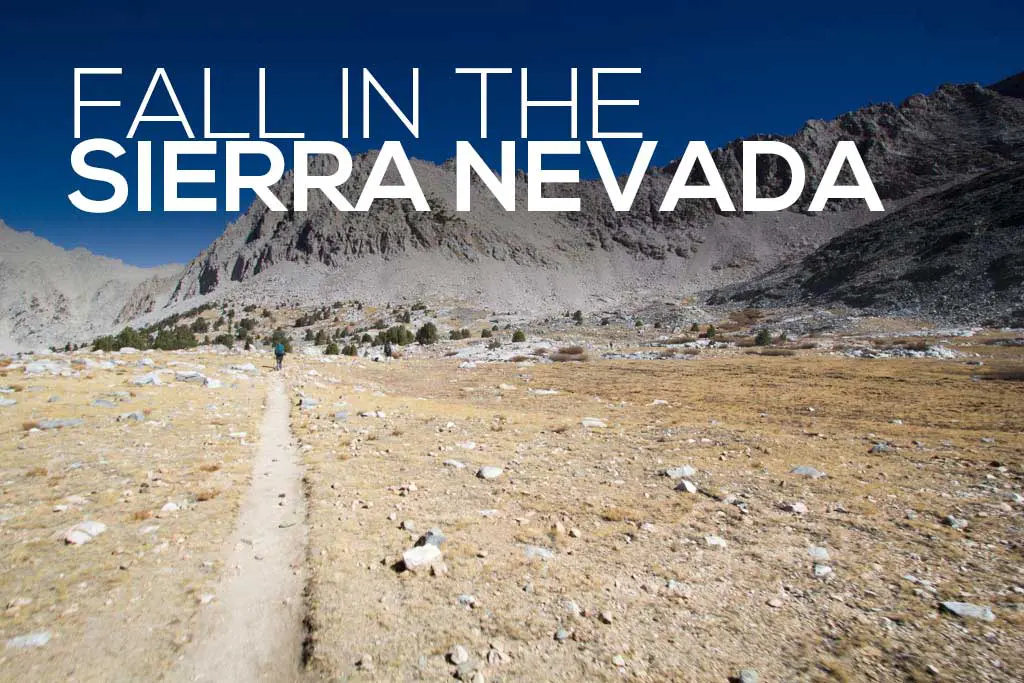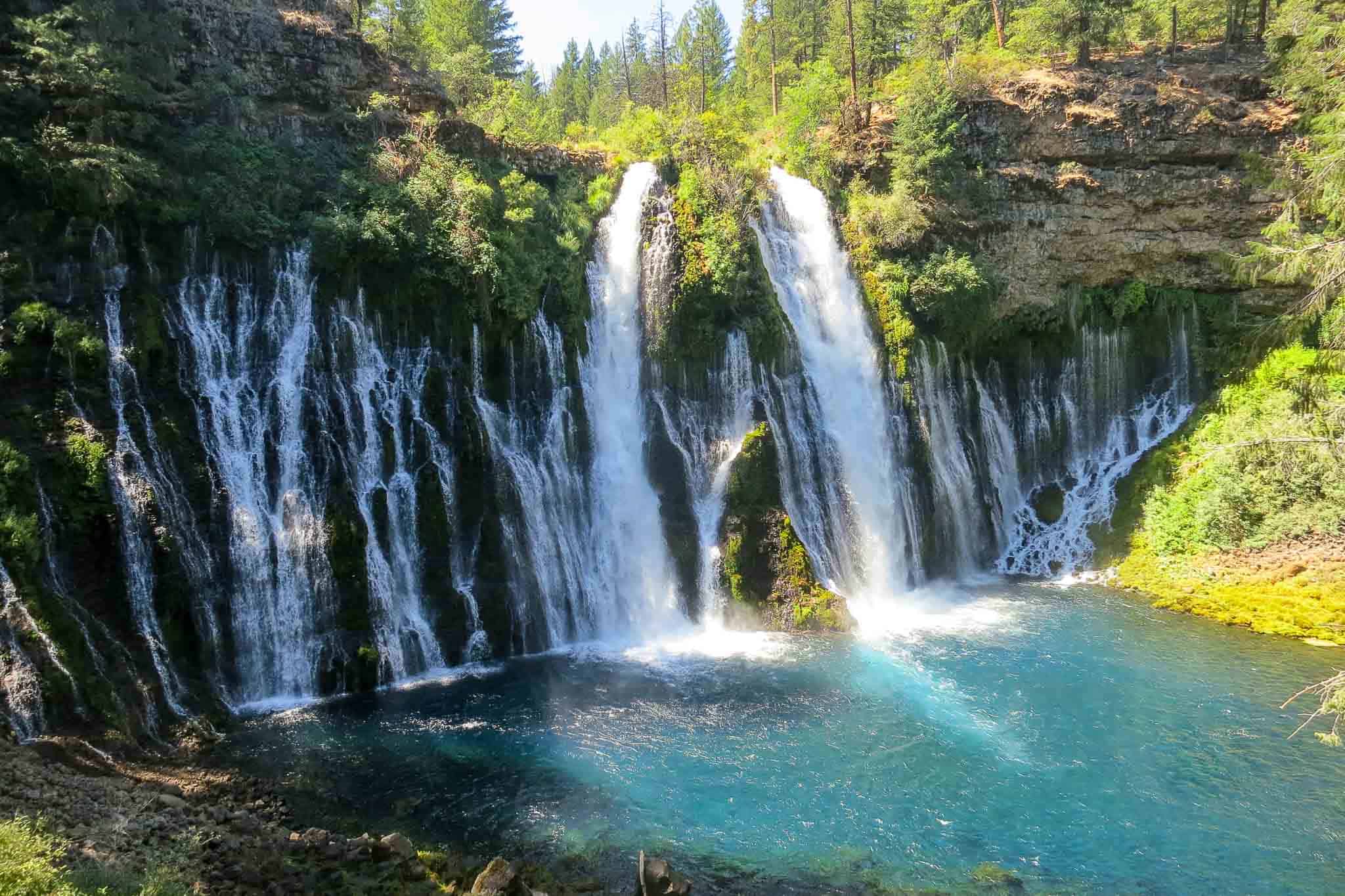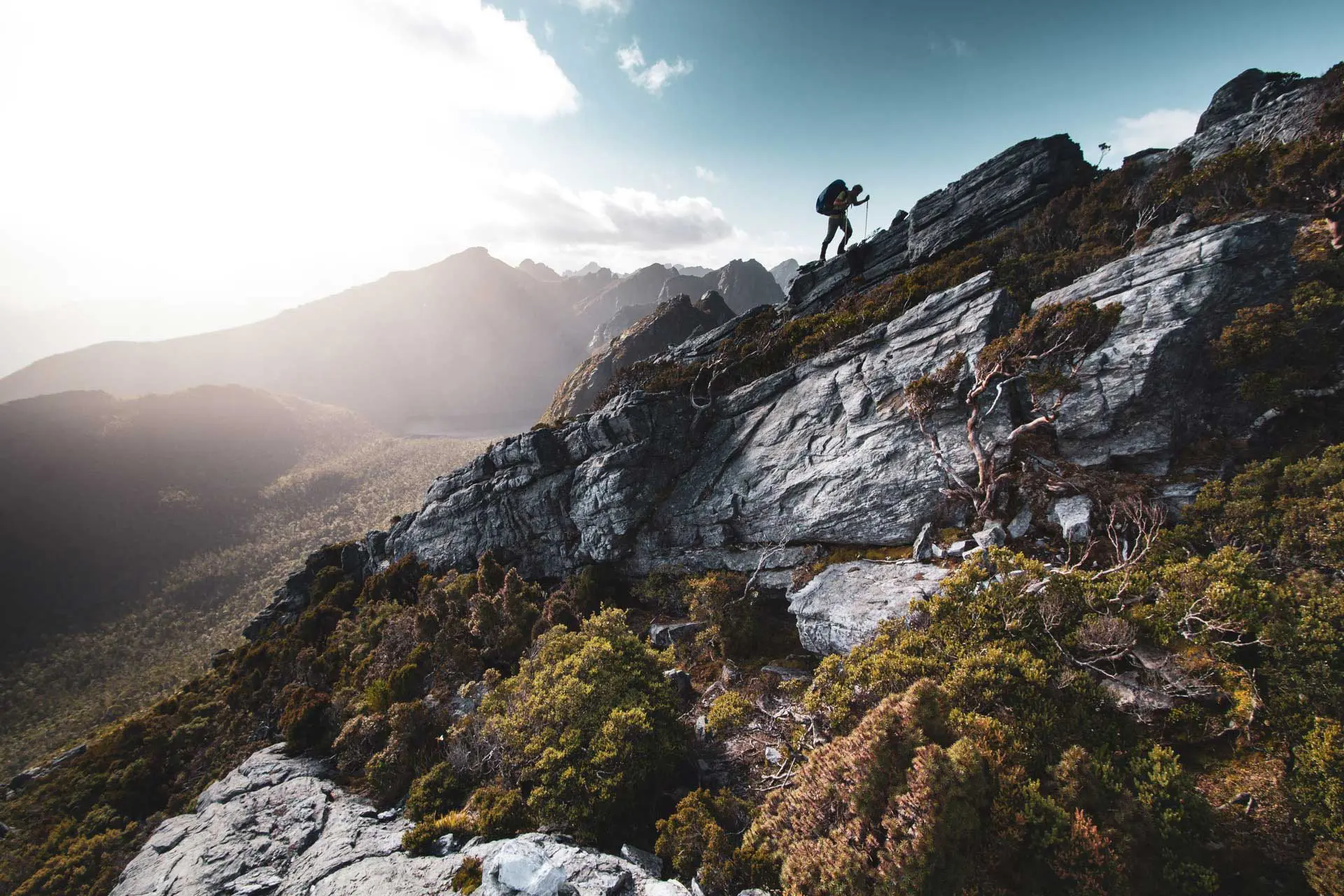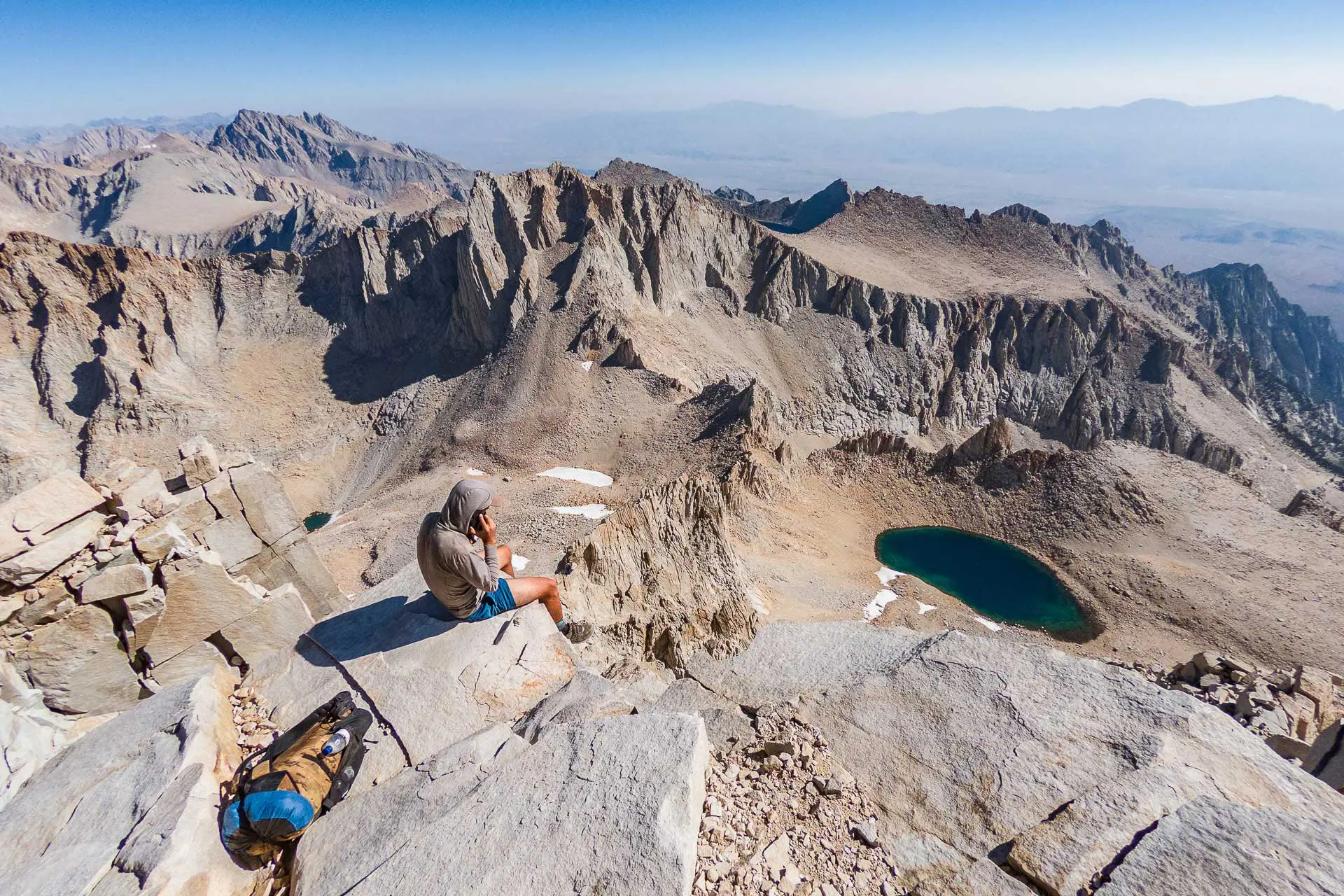Trans-Catalina Trail Backpacking Guide
The Trans-Catalina Trail runs the length of Catalina Island and is a popular backpacking trail just off the coast of Southern California. At around 38.5 mi / 62 km, the trail can be hiked quickly or at a more leisurely pace – with several alternates and detours available to anyone looking for a bit of extra adventure.
The area of Catalina Island outside of its two population centers – Avalon and Two Harbors – is largely managed by the Catalina Island Conservancy. This includes the Trans-Catalina Trail. As the island is largely protected, dispersed camping is not permitted on Catalina Island, and Trans-Catalina Trail hikers will have to utilize any or all of the five campsites along the trail: Hermit Gulch Campground (in Avalon), Black Jack Campground, Little Harbor Campground, Parsons Landing Campground, and Two Harbors Campground.
These campgrounds are what can make the Trans-Catalina Trail slightly tricky – as you’ll need a reservation to camp at any of them (if you’re curious about how to tackle the Trans-Catalina Trail in a day, check out this post). In this guide, I’ll cover everything you need to know to hike the Trans-Catalina Trail – from getting to and from Catalina Island, to securing Trans-Catalina Trail permits and where to find reliable water sources.
Trans-Catalina Trail Overview
- Location: Catalina Island (California, USA)
- Length: 38.5 mi / 62 km
- Type: One-way
- Recommended Time: 2-5 days
- Possible Time: 1 day
- Most Popular Months: May to September
- Max Group Size: 10
- Permit Required: Yes
- Permit Cost: $0 for a single-day trip (permit link)
- Campground Reservations Required: Yes
- Campground Costs: ~$30/night (more on this here)
- Dogs Allowed: Yes
- Trailheads: Avalon (33.342719, -118.323749) | Two Harbors (33.441628, -118.498261)
- Low Point: Avalon, Little Harbor/Shar Harbor, Two Harbors (sea level)
- High Point: Granite Peak, 1,752 ft / 534 m (map)
- Elevation Gain: 8,112 ft / 2,473 m
- Elevation Loss: 8,089 ft / 2,466 m
- Difficulty: Moderate
Things to Know
- There is no hiking permitted after dark.
- There is no dispersed camping permitted on Catalina Island. You must camp in one of the designated campgrounds.
- There are bison on Catalina Island. These are wild animals and should be respected. Do not approach, startle, or harass bison. I had to wait (multiple times) for bison to move off the trail.
- No smoking or open fire is allowed anywhere on Conservancy land except at designated campgrounds or facilities.
- Hitchhiking on Catalina Island is prohibited.
- Dogs must be leashed at all times. Cats or other non-native animals are not allowed. All dog waste must be collected and removed.
- There is luggage storage available in Avalon provided by Blue Line Baggage.
Photo Gallery














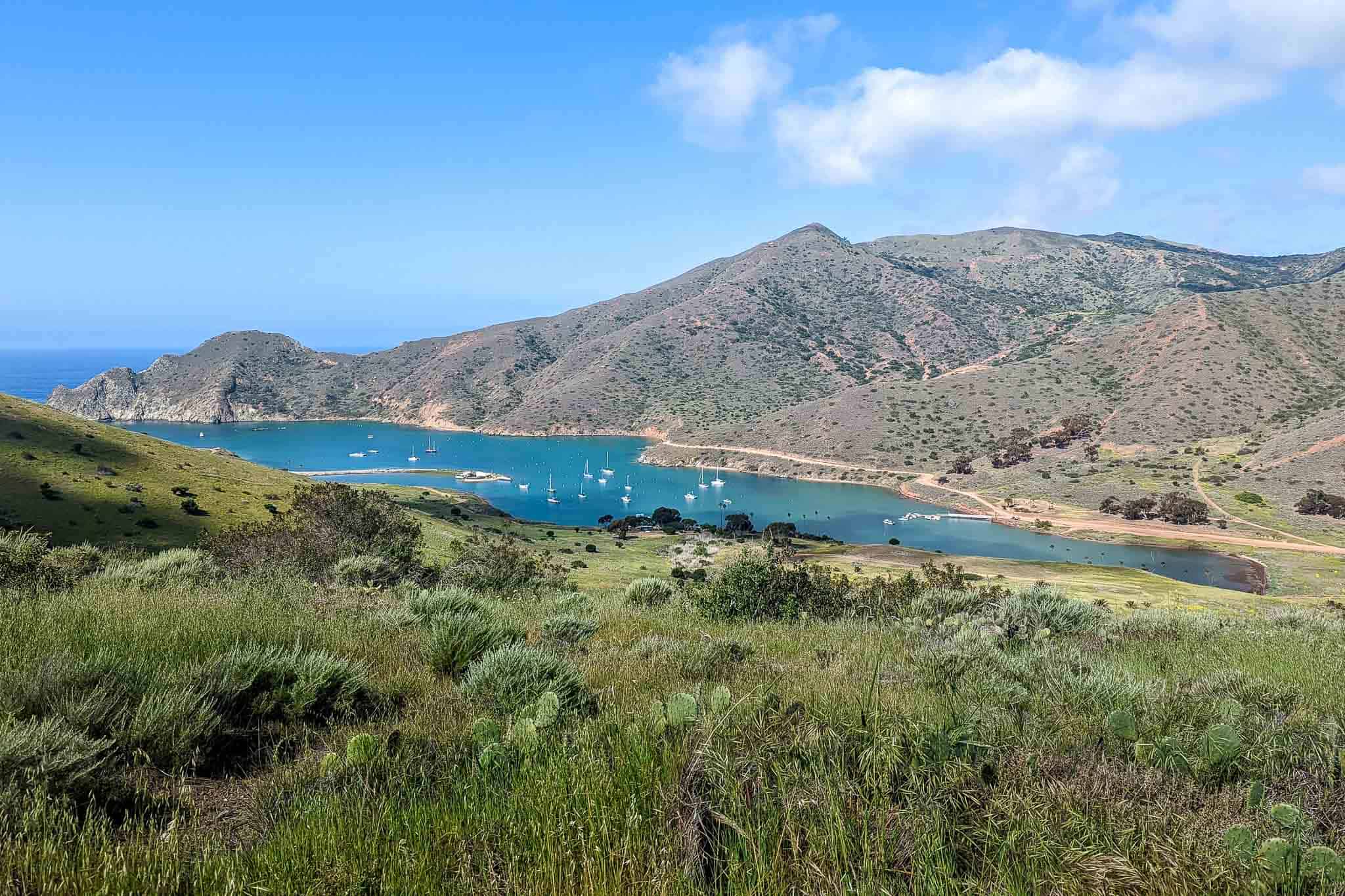





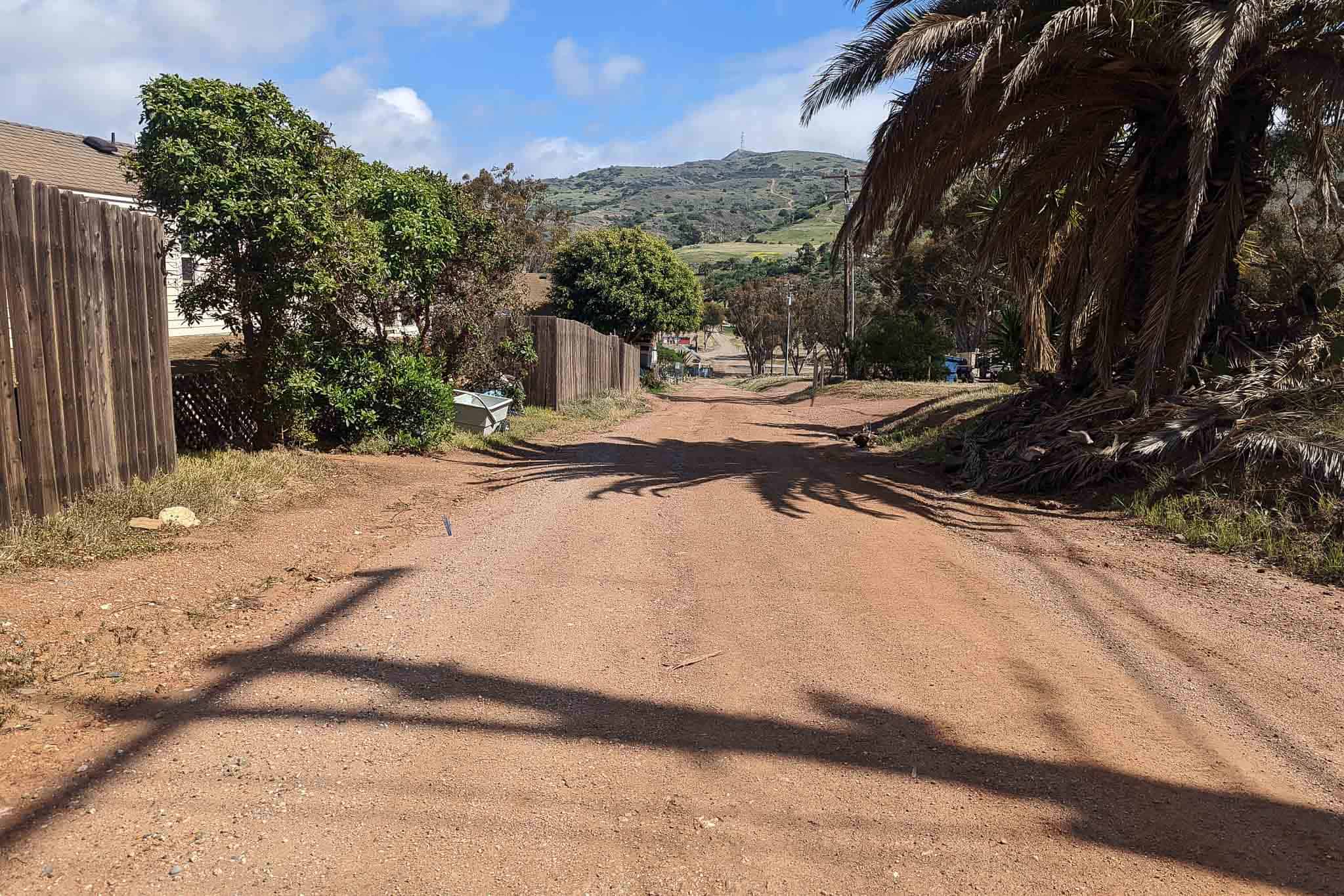

Getting to Catalina
You can reach Catalina either by boat, plane, or helicopter. If you’re hiking the Trans-Catalina Trail, you’ll likely be using the boat option (as most people do since it’s the more affordable option). The Catalina Airport (AVX) is a private airport in the middle of the island and would be an inconvenient place to begin a Trans-Catalina Trail journey (commercial helicopters fly to Avalon). That said, the trail does go right past the airport.
For boats, you have two choices, the Catalina Express (with service to/from San Pedro, Long Beach, and Dana Point) or the Catalina Flyer (with service to/from Newport Beach).
Only the Catalina Express offers service to and from Two Harbors. It is possible to take the Catalina Express from Two Harbors to Avalon. Beginning Memorial Day Weekend, there is also daily service between Avalon and Two Harbors via the Cyclone powerboat. The Catalina Flyer goes only between Avalon and Newport Beach.
Costs
As of this article’s publication, the costs associated with getting to/from Catalina are as follows:
- $35.00 Catalina Flyer – Newport Beach to/from Avalon (general seating)
- $38.00 Catalina Express – San Pedro to/from Two Harbors (general seating)
- $38.50 Catalina Express – Long Beach to/from Avalon (general seating)
- $38.50 Catalina Express – San Pedro to/from Avalon (general seating)
- $40.50 Catalina Express – Dana Point to/from Avalon (general seating)
- $159 Helicopter from Long Beach to Avalon (one way)
- $15.00 Cyclone powerboat – Service between Avalon and Two Harbors (seasonal)
Trailheads
There are two trailheads for the Trans-Catalina Trail, one in Avalon and one in Two Harbors. You can start the trail from either trailhead, and there are cases to be made for either direction.
Avalon Trailhead
The Avalon trailhead for the Trans-Catalina Trail is at the roundabout in front of Catalina Island Conservancy Trailhead (map). Note: I found the staff here to be both unhelpful and unfriendly – hostile even. If you have questions, I recommend calling Two Harbors Visitor Services (+1 310 510 4205).
The first 1.6 mi / 2.6 km of the trail from the trailhead is on a paved road leading to Hermit Gulch Campground (map). If you don’t care about this first bit of trail, you can instead start at this trailhead at Hermit Gulch. Camping here is also an option.
If you start from Avalon, you’ll be doing the trail in the more traditional direction and you’ll begin with a climb leaving Hermit Gulch.
Two Harbors Trailhead
There’s no officially marked trailhead in Two Harbors for the Trans-Catalina Trail (that I’m aware of), but a good place to start (or end) the trail is at Two Harbors Visitor Services (map).
The westernmost part of the trail is a ~14 mi / 22.5 km loop that begins at Two Harbors, passes Parsons Landing, and then returns to Two Harbors. You can choose to skip this portion of the hike regardless of the direction you’re hiking, but for the sake of the rest of this article, we’ll assume you’re doing the entire Trans-Catalina Trail and that the loop from Two Harbors is done clockwise if starting from Avalon and counterclockwise if starting at Two Harbors.
Starting at Two Harbors means you’ll begin the trail with an ~8 mi / 12.9 km, relatively flat section along an unpaved road to Parsons Landing – the first (and most remote) campsite.
Where to Stay
Spending the night either before or after completing the Trans-Catalina Trail is a reasonable option – particularly if you want to make the most of your time both on and off the trail.
Avalon
If you’re planning to stay in Avalon, there are plenty of options. You can stay in one of Avalon’s many hotels, rent a (probably very expensive) Airbnb, or stay at Hermit Gulch Campground.
Two Harbors
If you’re planning to stay in Two Harbors, your options are limited. You can stay at Banning House, one of two vacation rentals (Villa Santa Rosa or Villa Santa Cruz), or the Two Harbors Campground (there are tent sites and deck rooms – i.e. cabins).
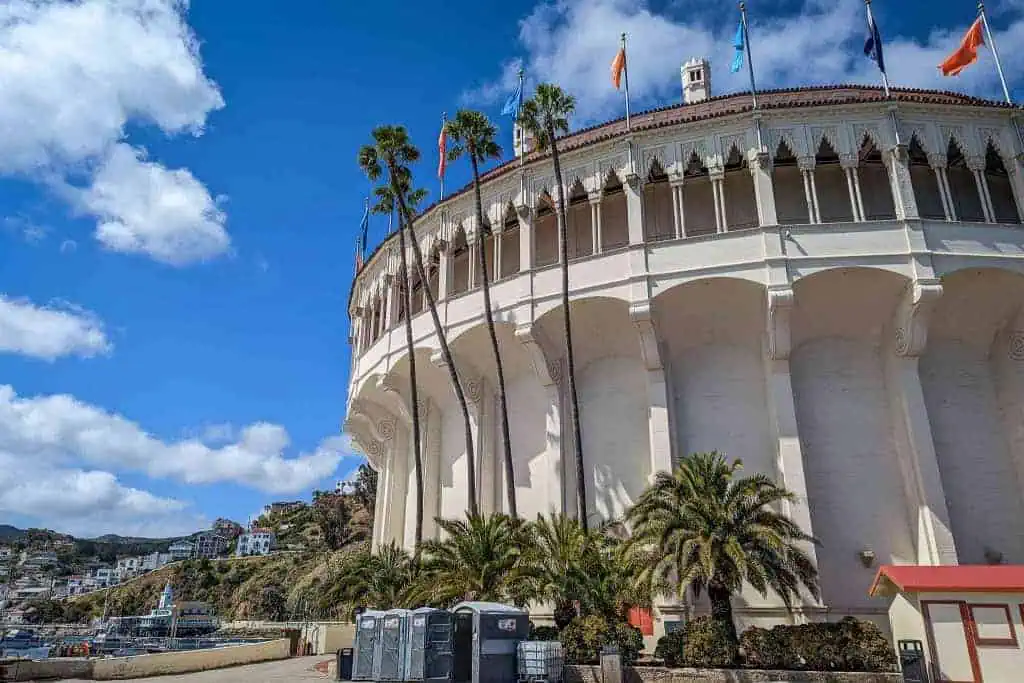
When to Hike
The Trans-Catalina Trail can be done year-round. That said, the most popular months are from May through September. However, one thing to keep in mind is that the boats to and from Catalina operate with seasonal schedules. There are more trips to and from Catalina during the period from April through September. The Cyclone powerboat between Avalon and Two Harbors does not operate in the off-season.
Peak Season (May to September): These months are the most popular for hiking the Trans-Catalina Trail. There will be more demand for campsites during this time, so planning is encouraged. Summer highs, on average, are around 77°F / 25°C and lows are around 62°F / 17°C.
Shoulder Season (March/April, October/November): The shoulder seasons are arguably the best time for hiking the Trans-Catalina Trail. Not too hot, not too cold, not too many people, and not great chances of precipitation. I did it in March and thought the weather/conditions were fantastic. That said, it had rained two days before I arrived on the island.
Winter (December-February): There’s nothing wrong with hiking the Trans-Catalina Trail during the winter – it will just be cooler than other times of the year. Temperatures rarely dip too low (49°F / 9°C is the average low). Do keep in mind that the winter is Catalina’s rainy season. It only rains an average of 12 in / 30 cm per year with most of it occurring in the winter months.
Trans-Catalina Trail Permits
You need a permit if you’re planning to hike the Trans-Catalina Trail. The permit is free and can be acquired online from the Catalina Conservancy. The complicating factor for most people’s hikes is campsite reservations, not the permit.
To get a Trans-Catalina Trail permit, you’ll need to create an account, provide your name, email, address, and phone number, choose “Trans Catalina Trail” from the dropdown menu, and then provide the start date of your hike as well as your start time.
All this said, if you have campground reservations for the Trans-Catalina Trail, this serves as your permit and you do not need to apply for a second one (although it won’t hurt if you do).
There is nobody at the start or end of the hike to check or sign off on your permit. Presumably, your permit can be checked by law enforcement on the island at any time. There are on-site rangers at Hermit Gulch Campground and Little Harbor Campground.
Gear & Packing List
For a multi-day backpacking trip on the Trans-Catalina Trail, you’ll need a complete three-season backpacking setup. This should include a tent, sleeping pad, and sleeping bag. It shouldn’t have to be said, but not everyone would think to bring all these things for an overnight backpacking trip. “Sleeping naked on the beach” is not a great plan for hiking the trail.
ELECTROLYTES: Bring electrolytes! Despite temperatures never climbing too high, the Trans-Catalina Trail is exposed. There is little shade on the trail and the sun can be intense. Make sure you’re staying hydrated – particularly between water sources.
SUNSCREEN: Bring sunscreen (or wear a sun hoody). The trail is very exposed. If you’re hiking during the summer (or any time of year, really), you can expect to be in the sun for the majority of the trail. And don’t forget that Little Harbor, Two Harbors, and Parsons Landing are all on the beach – if you want to get salty.
WATER: Water sources are by no means plentiful on the Trans Catalina Trail. It’s important to have enough water capacity to ensure you’ll be able to remain hydrated between water sources. In addition to my water bottles, I like to carry an extra packable reservoir like this one for longer water carries or for when I might need some extra water (also available in a 3L version).
PERSONAL LOCATOR BEACON (PLB): There is cell reception on Catalina Island (not for the entirety of the trail, but there is some) and there are typically other people out that you’ll see on your hike, but carrying a PLB is always a good idea. I carry a Garmin inReach Mini. It’s small, lightweight, and can save your life.
WATER FILTER: I was told that the water from spigots along the Trans-Catalina Trail is safe to drink, but if you want to play it safe then bring along something like a Platypus QuickDraw or Sawyer Squeeze for filtering your water. If you’re with a group and want to filter water from the spigots, I suggest something like the Platypus GravityWorks.
TREKKING POLES: If you’re a fan of using trekking poles when you then don’t forget them on the Trans-Catalina Trail. There is 16,201 ft / 4,938 m of total elevation change across the trail and a couple of steep ascents/descents.
For more recommendations on backpacking gear, check out my current gear list or gear reviews.
Catalina Bison
There are approximately 150 bison on Catalina Island. These bison are wild animals; they can seriously injure or kill you. They can quickly reach speeds of up to 35 mph / 56 km/h and they can jump over 6 ft / 2 m.
Never approach, touch, or attempt to feed bison; leave them alone. It’s wise to identify escape routes if you find yourself close to bison and feeling threatened. You want to get a large object between you and the bison – like a tree, rock, or vehicle. Give the bison a path to avoid you. You should also never box in a bison (e.g. with people being both in front and behind it).
You should report any unusual bison behavior to the Catalina Conservancy Rangers at +1 310 510 2595.
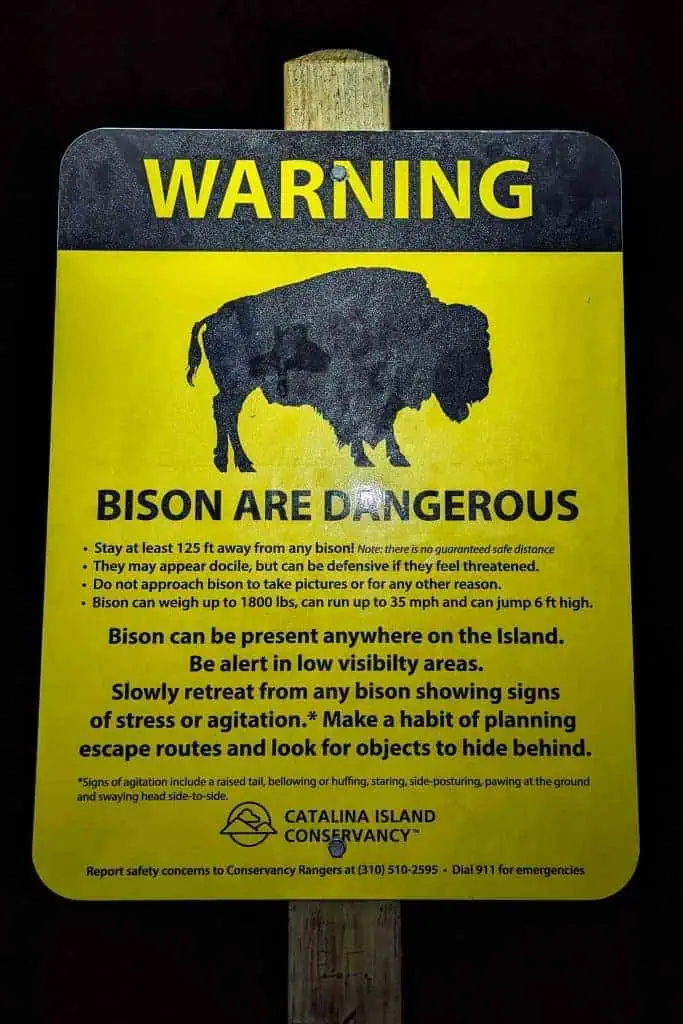
Route Description
Overall, the trail is relatively well marked and easy to follow. I used my phone for navigation whenever my route was called into question. Beginning in Avalon, the trail follows paved roads to Hermit Gulch Campground before climbing ~1,500 ft / 457 m to Divide Road (there’s a bathroom here).
The trail follows Divide Road before cutting west past Haypress Reservoir (where there’s a playground, parking lot, and water spigot). It then, more or less, runs parallel to Airport Road past Cape Canyon Reservoir and to Black Jack Campground.
From the campground, the trail descends briefly but sharply before climbing up to the Catalina Airport. Inside the airport are a bathroom, snack bar, and potable water. North of the airport, the trail joins Empire Landing Road and continues west/northwest before splitting off and descending to Little Harbor Campground – back at sea level.
From Little Harbor, the trail climbs 1,000 ft / 305 m before undulating and continuing to climb. Two Harbors soon comes into view as the trail descends once more to sea level. From Two Harbors, you could technically go either counterclockwise or clockwise since the trail does a loop and comes back to Two Harbors to end. The standard route is clockwise.
Clockwise out of Two Harbors, the trail begins its biggest climb – sea level up to 1,709 ft / 521 m. You then descend – quite steeply at times – to Parsons Landing back at sea level. About 1 mi / 1.6 km after leaving Parsons Landing, the trail meets the unpaved and relatively flat West End Road and follows it back to Two Harbors.
Itinerary
At 38.5 mi / 62 km, the Trans-Catalina Trail isn’t an enormously long backpacking trip. Depending on your available time and level of experience, you could take up to five days to complete the trail – longer if you decide to spend two or more nights at one of the campgrounds along the way.
The limiting factor for the trail is the campgrounds since they’re the only places you’re permitted to camp.
- Day 1: Avalon to Black Jack Campground, 10.5 mi / 16.9 km
- Day 2: Black Jack Campground to Little Harbor Campground, 8.5 mi / 13.7 km
- Day 3: Little Harbor Campground to Two Harbors Campground, 7 mi / 11.3 km
- Day 4: Two Harbors Campground to Parsons Landing Campground, 6.6 mi / 10.6 km
- Day 5: Parsons Landing Campground to Two Harbors Campground, 7.7 mi / 12.4 km
Could you do the entire trail in a single day? Yes. I wrote a detailed post on doing just that here if you’re interested.
I’ve also put together this table to help visualize the distances between campgrounds.
| AVALON | HERMIT GULCH | BLACK JACK | AIRPORT | LITTLE HARBOR | TWO HARBORS 1 | PARSONS LANDING | TWO HARBORS 2 | |
| AVALON | X | 1.5 mi / 2.4 km | 10.5 mi / 16.9 km | 12.5 mi / 20.1 km | 18.5 mi / 29.8 km | 24 mi / 38.6 km | 32.6 mi / 53.5 km | 38.5 mi / 62 km |
| HERMIT GULCH | 1.5 mi / 2.4 km | X | 9 mi / 14.5 km | 10 mi / 16.1 km | 16 mi / 25.8 km | 22.5 mi / 36.2 km | 31.1 mi / 50.1 km | 37 mi / 59.6 km |
| BLACK JACK | 10.5 mi / 16.9 km | 9 mi / 14.5 km | X | 2 mi / 3.2 km | 8.5 mi / 13.7 km | 15 mi / 24.1 km | 21.6 mi / 34.8 km | 29.3 mi / 47.2 km |
| AIRPORT | 12.5 mi / 20.1 km | 10 mi / 16.1 km | 2 mi / 3.2 km | X | 6 mi / 9.7 km | 13 mi / 20.9 km | 19.6 mi / 31.5 km | 27.3 mi / 43.9 km |
| LITTLE HARBOR | 18.5 mi / 29.8 km | 16 mi / 25.8 km | 8.5 mi / 13.7 km | 6 mi / 9.7 km | X | 7 mi / 11.3 km | 13.6 mi / 21.9 km | 21.3 mi / 34.3 km |
| TWO HARBORS 1 | 24 mi / 38.6 km | 22.5 mi / 36.2 km | 15 mi / 24.1 km | 13 mi / 20.9 km | 7 mi / 11.3 km | X | 6.6 mi / 10.6 km | 14.3 mi / 23 km |
| PARSONS LANDING | 32.6 mi / 53.5 km | 31.1 mi / 50.1 km | 21.6 mi / 34.8 km | 19.6 mi / 31.5 km | 13.6 mi / 21.9 km | 6.6 mi / 10.6 km | X | 7.7 mi / 12.4 km |
| TWO HARBORS 2 | 38.5 mi / 62 km | 37 mi / 59.6 km | 29.3 mi / 47.2 km | 27.3 mi / 43.9 km | 21.3 mi / 34.3 km | 14.3 mi / 23 km | 7.7 mi / 12.4 km | X |
Campgrounds
There are five campgrounds located along the Trans-Catalina Trail. You can make reservations at any of the Trans-Catalina Trail campgrounds here.
The Trans-Catalina Trail campgrounds are:
- Hermit Gulch Campground
- Black Jack Campground
- Little Harbor Campground
- Two Harbors Campground
- Parsons Landing Campground
Campground reservations open on January 1 at 12:01 am for the entire year (that’s one minute after midnight on New Year’s Eve). There are no walk-up sites at any of the campgrounds – reservations are required. Additionally, there is no dispersed/wild camping permitted on Catalina Island; you’re required to stay at one of the designated campgrounds.
The campgrounds are not cheap at around $30 per person per night. If you’re planning on staying at each of the campgrounds during your Trans-Catalina Trail hike, be prepared for it to cost you.
- Check-in time is 2 pm
- Check-out time is 11 am
- Quiet hours are from 10 pm to 9 am
- Loud or amplified sound and music, including radios, are not permitted at any time
- Fires and smoking are permitted in the BBQ and fire ring areas only
- Woodcutting, plant collecting, or in any way removing or defacing any natural or man-made feature is prohibited
- Firearms, archery equipment, traps, or other hunting equipment are prohibited
- No pets are allowed at Two Harbors orHermits Gulch Campground – dogs must be on a leash elsewhere
- There is a 10-day maximum stay at all campgrounds
- Cancellations must be made 72 hours in advance of reservations

Hermit Gulch Campground
Located within the Avalon city limits, Hermit Gulch Campground (map) can be considered the unofficial start (or end) of a Trans-Catalina Trail hike. It’s just 1.5 mi / 2.4 km from the Catalina Conservancy Trailhead (which is a one-minute walk from where the ferries dock) and is located along a paved road.
For the most up-to-date information on Hermit Gulch Campground, check here.
Hermit Gulch Campground Amenities
- 6 tent cabins for up to six people
- 3 tent cabins for up to three people
- 40 tent sites
- On-site ranger Thursday through Sunday between 8:00 am and 5:00 pm.
- Potable water
- Lighted restrooms with flushing toilets
- Picnic tables and BBQ Stands at each campsite and tent cabin
- Outdoor kitchen style sinks
- Quarter-operated showers
- Quarter-operated lockers (17″H x 12″W x 17″D)
- Beverage vending machine
Hermit Gulch Campground Costs
The prices per night for stays at Hermit Gulch Campground are as follows. In addition to the below costs, you’ll also be charged a “transaction fee” of $9.25 and city tax.
| TIME OF YEAR | ADULT (12+) | CHILD | TENT CABIN |
|---|---|---|---|
| Summer Rates (March 1 – October 31) | $30 | $21 | $75 |
| Winter Rates (November 1 – February 28) | $28 | $19 | $65 |
| Holiday Rates (3-night minimum) | $30 | $21 | $85 |
Tent Cabins include cots, a lantern, and a propane stove with one canister of propane. For tent cabins, the per person per night camping fee is charged in addition to the tent cabin per night rate. Tent cabins have an additional 12% occupancy tax.
You cannot reserve your exact space or cabin in advance. The location and number of the campsite or tent cabin are assigned upon check-in.
Note: Weekends have a two-night minimum (May 1 – October 31) and holidays have a three-night minimum. Holidays include Memorial Day, Independence Day, and Labor Day. The two-night minimum requirement is waived on all tent sites for Trans-Catalina Trail hikers.

Black Jack Campground
Black Jack Campground (map) is the island’s highest at 1,600 ft / 488 m. Via the Trans-Catalina Trail, Black Jack Campground is ~11 mi / 17.7 km from the boat terminal in Avalon and ~14.5 mi / 23.3 km from Two Harbors.
For the most up-to-date information on Black Jack Campground, check here.
Black Jack Campground Amenities
- 10 tent sites
- Potable water
- Cold outdoor showers
- Chemical toilets
- No open fires are permitted
- No ranger on site
- Restaurant available two miles up the trail at Airport-in-the-Sky
Black Jack Campground Costs
The prices per night for stays at Black Jack Campground are as follows. In addition to the below costs, you’ll also be charged a “transaction fee” of $9.25.
| TIME OF YEAR | ADULT (12+) | CHILD |
|---|---|---|
| Summer Rates (March 1 – October 31) | $26 | $17 |
| Winter Rates (November 1 – February 28) | $21 | $12 |
| Holiday Rates | $27 | $18 |
Little Harbor Campground
Little Harbor Campground (map) is the only one on the backside (south side) of the island and is, in my opinion, the nicest of the Trans-Catalina Trail campgrounds. It is located ~5.1 mi / 8.2 km from Two Harbors and 19 mi / 30.6 km from Avalon via the Trans-Catalina Trail.
If you’re hiking from Two Harbors, you can purchase and fill a single-use cooler with whatever your heart desires (there’s a general store in Two Harbors) and you can then have that cooler delivered to Little Harbor for $40.
It’s also possible to reach Little Harbor Campground from Avalon via the Catalina Island Conservancy Wildlands Express Shuttle or Catalina Taxi & Tours taxi service.
For the most up-to-date information on Little Harbor Campground, check here.
Little Harbor Campground Amenities
- 26 sites (23 at Little Harbor and 3 at the adjacent Shark Harbor)
- Beach access
- Potable water
- Cold showers
- Chemical toilets
- Shade structures (not at every site)
- Ranger on site
- Fires are permitted in designated fire rings
- Firewood is available from Visitor Services (must be arranged ahead of time)
- Kayak rentals from Wet Spot Rentals (requires a reservation, +1 310 510 2229).
Little Harbor Campground Costs
The prices per night for stays at Little Harbor Campground are as follows. In addition to the below costs, you’ll also be charged a “transaction fee” of $9.25.
| TIME OF YEAR | ADULT (12+) | CHILD |
|---|---|---|
| Summer Rates (March 1 – October 31) | $26 | $17 |
| Winter Rates (November 1 – February 28) | $21 | $12 |
| Holiday Rates | $27 | $18 |
From May through October, weekends have a two-night minimum. Holidays (Memorial Day, Independence Day, and Labor Day) have a three-night minimum.
Two Harbors Campground
Two Harbors Campground (map) is located just up the road from the pier and Two Harbors Visitor Services. It’s unique because you can choose to stay here multiple times during a Trans-Catalina Trail hike. There’s also a general store and flushing toilets located nearby.
If you begin in Avalon, you’ll pass Two Harbors ~24 mi / 38.6 km into the trail. You can stay here at this point in the trail and then again if you choose when you finish the hike (in Two Harbors).
If you begin in Two Harbors, you can spend the night here before officially beginning your hike; you’ll then pass back through Two Harbors after completing the ~14.5 mi / 23.3 km loop around the west part of the island and past Parsons Landing Campground.
Two Harbors Campground Amenities
- 47 tent sites
- 13 tent cabins
- 2 group sites
- Potable water
- Shade structures
- Picnic tables
- Fire pits with cooking grates
- Gear haul service between pier and campground before/after Catalina Express arrivals/departures ($6 per bag per round trip)
Two Harbors Campground Costs
The prices per night for stays at Two Harbor Campground are as follows. In addition to the below costs, you’ll also be charged a “transaction fee” of $9.25.
| TIME OF YEAR | ADULT (12+) | CHILD | TENT CABIN |
|---|---|---|---|
| Summer Rates (March 1 – October 31) | $30 | $21 | $75 |
| Winter Rates (November 1 – February 28) | $28 | $19 | $65 |
| Holiday Rates | $31 | $22 | $85 |
Tent Cabins each include six cots, a rechargeable lantern, and a two-burner propane stove with one canister of propane. For tent cabins, the per person per night camping fee is charged in addition to the tent cabin per night rate. Tent cabins have an additional 12% occupancy tax.
Note: Weekends have a two-night minimum (May 1 – October 31) and holidays have a three-night minimum. Holidays include Memorial Day, Independence Day, and Labor Day. The two-night minimum requirement is waived on all tent sites for Trans-Catalina Trail hikers.
Parsons Landing Campground
Parsons Landing Campground (map) is 30.8 mi / 49.6 km from Avalon, 6.6 mi / 10.6 km from Two Harbors heading clockwise, and 7.7 mi / 12.4 km from Two Harbors heading counterclockwise. It’s arguably the most remote of the Trans-Catalina trail campground.
Parsons Landing Amenities
There is no potable water at Parsons Landing Campground. However, there are lockers installed at the campground that Two Harbors Visitor Services will stock with one bundle of firewood, one fire starter, and a two-gallon (~8L) jug of water for $25.
You must arrange for this ahead of time. Additionally, you are required to pick up your locker key from Visitor Services in Two Harbors before heading to Parsons Landing.
In addition to the lockers, Parsons Landing has:
- 8 tent sites
- Beach access
- BBQ and fire ring
- Picnic table
- Chemical toilets
Parsons Landing Campground Costs
The prices per night for stays at Parsons Landing Campground are as follows. In addition to the below costs, you’ll also be charged a “transaction fee” of $9.25.
| TIME OF YEAR | ADULT (12+) | CHILD |
|---|---|---|
| Summer Rates (March 1 – October 31) | $26 | $17 |
| Winter Rates (November 1 – February 28) | $21 | $12 |
| Holiday Rates | $27 | $18 |
Water Sources
Water sources on the Trans-Catalina Trail are fairly straightforward. Along the trail, you have four locations where you can get water – there’s also the Catalina Airport (a fifth source) – just off the trail, where you can also get water. The airport is fairly close to Black Jack Campground.
There’s also technically a sixth (and maybe a seventh) spot to get water at Parsons Landing (and at Emerald Bay Camp) which I’ll cover below. The reliable water sources along the Trans-Catalina Trail are:
Avalon: There are plenty of places – hotels, restaurants, bars, etc. – to fill up on water in Avalon.
Hermit Gulch Campground: There are water spigots with potable water at Hermit Gulch Campground. Hermit Gulch Campground is located within Avalon city limits and is the de facto trailhead for the Trans-Catalina Trail in Avalon.
Haypress Reservoir: There should be water in the parking area at Haypress Reservoir (there’s a playground and a bathroom here). Google Maps shows a spigot on street view. As with all the water sources, check with Visitor Services to be sure this water can be relied on. The reservoir is 5.6 mi / 9 km from Avalon and 5 mi / 8 km from Black Jack Campground.
Black Jack Campground: There are water spigots with potable water at Black Jack Campground. The campground is 10.6 mi / 17.1 km from Avalon and 8.3 mi / 13.4 km from Little Harbor.
Catalina Airport: The airport is 12.6 mi / 20.3 km from Avalon and 2 mi / 3.2 km from Black Jack Campground (in the direction of Two Harbors). It’s just off the trail and will require a slight detour if you wish to refill your water here. There are also food options available at the airport. It’s probably not worth stopping here since Black Jack is so close (but do what makes you happy).
Little Harbor Campground: There are water spigots with potable water at Little Harbor Campground. The campground is 19 mi / 30.6 km from Avalon, 8.4 mi / 13.5 km from Black Jack Campground, and 5.2 mi / 8.4 km from Two Harbors).
Two Harbors: Two Harbors is located 24.2 mi / 39 km from Avalon. You’ll pass through it once and then do a clockwise loop past Parsons Landing before returning to finish. There’s a bathroom near Visitor Services in Two Harbors (map) where you can get water from the sink (or so said the person working at Visitor Services). However, when I passed through Two Harbors, I got water from inside the fire station (map). I asked them for water and they let me inside to refill. If you’re starting at Two Harbors, you pass back through after 14.3 mi / 23 km of trail.
Parsons Landing: This camp is located 30.8 mi / 49.6 km from Avalon, 6.6 mi / 10.6 km from Two Harbors heading clockwise, and 7.7 mi / 12.4 km from Two Harbors heading counterclockwise. For those hiking the Trans-Catalina Trail, Parsons Landing is one of the campsites available to stay at – on the far west side of the island. This campsite is on the beach and does not have fresh water available (however, there is a toilet). That said, hikers can have water cached here in a locker. You’ll have to arrange this ahead of time by calling Visitor Services at +1 310 510 4205. You will also have to pick up a key in Two Harbors from Visitor Services to access the locker.
Additional Water Sources: I found a functioning water spigot/drinking fountain next to the trail/road near the intersection of Cove Road and the trail just outside of Camp Emerald Bay. Here’s the approximate location of the water source. I have no guarantees as to the reliability of this water source but figured I would include it here. This is at (approximately) mile 31.7 (51 km) – 7.5 mi / 12.1 km from Two Harbors heading clockwise on the trail or 6.8 mi / 10.9 km heading counterclockwise.
There may be seasonal streams or ponds found along the route as well. If you choose to use these, make sure you filter this water.
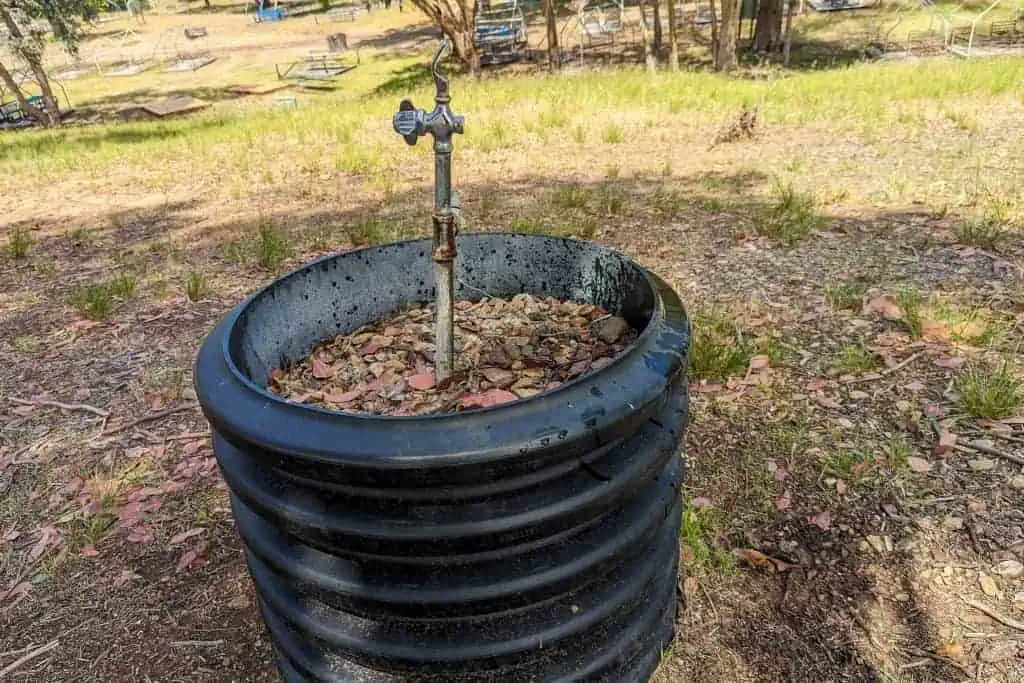
Map
The following is an overview of the Trans-Catalina Trail with landmarks. Note, this should be used as a guide and it is not necessarily 100% representative of what’s on the ground (i.e. you shouldn’t just be blindly trying to follow this track).
I’ve included a few alternate routes and tried to label all the noteworthy landmarks along the trail (e.g. the toilets). There’s also an overview map of the entire trail available here.
Alternates
There are a few alternate routes you can take if you want to extend your Trans-Catalina Trail hike. The ones of note are the East Mountain Road and Starlight Beach.
Neither of these is an official Trans-Catalina Trail alternate, but each is a way I thought interesting in the interest of making the hike a bit longer and more end-to-end Catalina hiking experience.
The East Mountain Road alternate begins in Avalon and follows East Mountain Road 7.8 mi / 12.6 km until meeting up with the official Trans-Catalina Trail along Divide Road. This route is 4.7 mi / 7.6 km longer than the official trail and it bypasses Hermit Gulch Campground. It also has around 100 ft / 30 m more elevation gain than the official route.
The Starlight Beach alternate begins shortly after the trail’s high point (coming from Avalon) just past the junction with Boushey Canyon Road. Instead of descending to Parsons Landing, you continue nearly 4 mi / 6.4 km to Starlight Beach on the far west side of the island. This adds 5.9 mi / 9.5 km to the trail but also grants you access to one of the most remote beaches on the island (and gets you very close to Catalina’s westernmost point).
Conclusion
The Trans-Catalina Trail is a beautiful trail that, even during peak season, never finds itself too crowded.
Campsite reservations are the limiting factor for being able to put together a multi-day itinerary for hiking the trail, but if you plan, you should have no issues being able to secure your spots (and don’t discount winter either).
With bison, foxes, beach access, the option to go kayaking from your campsite (Little Harbor – must be arranged ahead of time), and a well-maintained trail, the Trans-Catalina Trail is a unique and relatively accessible experience just off the coast of California’s largest population center.
I’m always looking to improve upon the information and resources provided in these guides so if you have any questions, suggestions, or updates, please leave a comment below or get in touch.
Resources
- Catalina Conservancy Permit
- Catalina Express (fares+schedule)
- Catalina Flyer (fares+shcedule)
- Hermit Gulch Campground
- Black Jack Campground
- Little Harbor Campground
- Trans-Catalina Trail campground reservations
- Catalina Hiking Map
- Cyclone Power Boat (seasonal service between Avalon and Two Harbors)
- Catalina Island Company
- Catalina Island Conservancy
- Trans-Catalina Trail (Catalina Island Conservancy)
- Two Harbors Information (Catalina Island Company)
- Blue Line Baggage (Avalon luggage storage and transportation)
- Catalina Island Conservancy Wildlands Express Shuttle (transport from Avalon to Little Harbor and/or airport)
- Catalina Taxi & Tours (taxi service around Catalina Island)
- Avalon Webcam
- Two Harbors Webcam
Affiliate Disclosure: This page may contain affiliate links, which means I may receive small commissions for purchases made via these links at no additional cost to you. This helps pay the bills and keep the site up and running. Thank you for your support!






